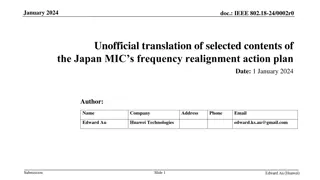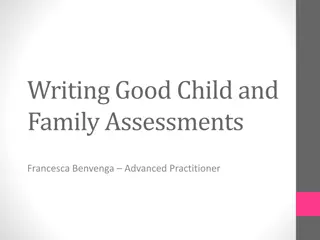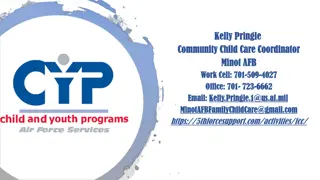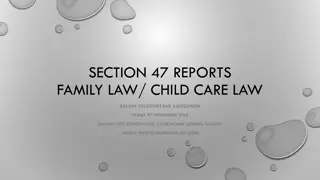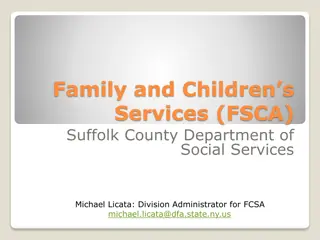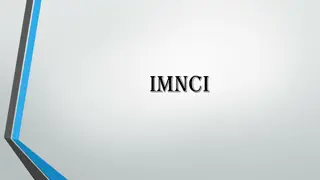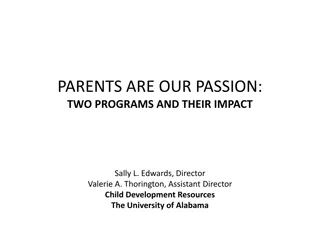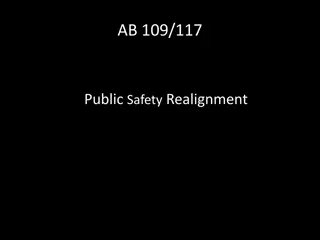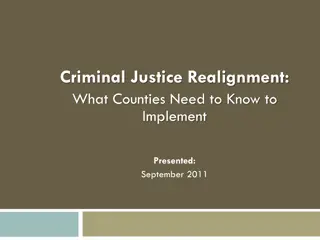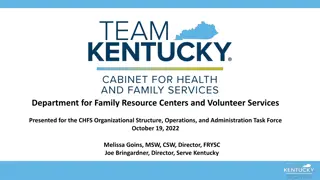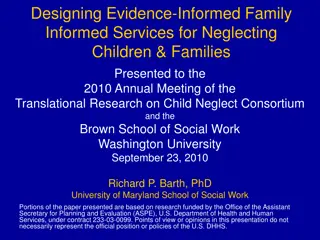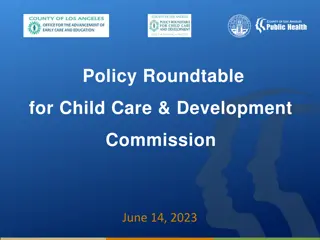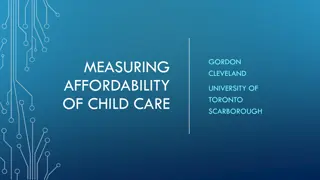Proposed Realignment of Child & Family Services
Proposed realignment of child and family services to integrate various elements into one system for better coordination and efficiency. Details the existing fragmented system and the need for a more cohesive approach to care.
Download Presentation

Please find below an Image/Link to download the presentation.
The content on the website is provided AS IS for your information and personal use only. It may not be sold, licensed, or shared on other websites without obtaining consent from the author.If you encounter any issues during the download, it is possible that the publisher has removed the file from their server.
You are allowed to download the files provided on this website for personal or commercial use, subject to the condition that they are used lawfully. All files are the property of their respective owners.
The content on the website is provided AS IS for your information and personal use only. It may not be sold, licensed, or shared on other websites without obtaining consent from the author.
E N D
Presentation Transcript
IFS was a proposed realignment of the child and family system of care. IFS was designed to bring together the various elements of child and family services into one integrated system.
Childrens Services used to reside across 6 Departments and 11 Divisions within the Agency of Human Services. Each of these stand alone silos was developed independently This lack of coordination resulted in a system of care that was fragmented, inefficient, and difficult to navigate.
Family Services Division Dept of Mental Health DCF Matched Waivers Individual Services Budgets Intensive Family Based Services Fee-for-Service Medicaid DMH Matched Waivers Respite DAIL Children s Waivers Bridges Flex Family Funds JOBS Program Dept of Aging & Ind Living Voc Rehab Div Child Development Division Children s Integrated Services CUPS Substance Abuse Dept of Health
Family Services Division Dept of Mental Health Dept of Aging & Ind Living Billing Systems Data Reporting Documentation Requirements Outcome Requirements Audits Voc Rehab Div Child Development Division Dept of Health
Aggregated single funding stream Standardized eligibility requirements Standardized guidelines and operating procedures Vermont dot gov Agency of Human Services Standardized Billing structure Data Reporting Documentation Requirements Outcome Requirements Oversight and Auditing Structures
Maintain the ability to manage at the team level while still allowing revenue/expense data to roll up into a common bundle Gauge community needs as compared to targeted / projected need (numbers served). Rates and caps set based on historical averages. Need to be able to reassess based on changing needs.
Ability to assess and monitor clinical change over time (Individual, program, and system perspective) Ability to assess community need and adjust clinical service delivery mix to meet that need. Drive to develop preventative programming was difficult given overall funding caps.
Training to shift from hours / week thinking towards achievement of clinical goals (in as few hours as possible) Team Dashboards to visually set targets and highlight progress Understanding of some teams will make money and others will loose money . Manage to targets, not to an even bottom line
Clear expectations about the authority to oversee operational details of the bundle (State, local, agency) Data to manage progress towards monthly and annual targets (Team Level and Bundle Level)
Training to shift from hours / week towards a achievement of clinical goals (in as few hours as possible) Flexibility allowed for within the bundle created a sense of we can do more. Caused tension within the community as the CAP is finite.



